When it comes to the performance of a website, there are few things as critical as the server response time. It’s like the heartbeat of your online presence, the pulse that determines whether your visitors will stay or go.
Imagine walking into a restaurant and waiting for an hour just to get a glass of water. You’d probably leave, right? Well, the same goes for your website. If your server response time is slow, your visitors are likely to bounce and head straight to your competitors’ sites.
But it’s not just about keeping your visitors happy. A fast server response time is also crucial for search engine optimization (SEO). Google and other search engines take into account how quickly your site loads, and a slow server response time can hurt your rankings.
So, if you want your website to thrive, it’s essential to pay attention to your server response time. It’s the backbone of your site’s performance and can make all the difference in whether your visitors stick around or move on.
What Is Response Time?
The time it takes for a server to respond to a request from the user is known as the response time, and time is counted in milliseconds from the moment a user sends a request until it receives the first response from the server.
Time to First Byte (TTFB) is a common metric used to characterize how long it takes for a server to respond to a client’s request and send back the first bytes of data. Client-side rendering and processing of data received as part of the response time are excluded.
Components Of Response Time
- DNS Lookup Time: The time it takes for a computer to send a request to a DNS and receive the IP address of the requested domain is known as the DNS Lookup time. The optimal time for a DNS lookup is between 20 and 120 ms.
- Authentication and connection time: The time it takes for a client computer to establish an encrypted and secure connection with a web server before sending the data packets requested by the client is known as the authentication and connection time. A TCP (and/or TLS) three-way security handshake must be performed to do this. These SSL-based secure connections can take anywhere from 250 ms to 500 ms to establish, on average. Connection times can be significantly impacted by network latency.
- Redirect Time: Redirect time is the time it takes for a server to make a DNS query and be redirected to a different server with up-to-date information. The average time required to reroute should be less than 300 ms.
- Time to First Byte: Time to First Byte measures how long the client and server can exchange the first bytes of data the application uses. In contrast to the handshake protocol, the record protocol enables the transfer of functional data packets for the service. The first byte should take between 0 and 200 milliseconds to load to not negatively impact the user experience.
- Time to Last byte: Final Byte Time is the time passed from when the client requested until the last byte of data was received in response.
Best Practices To Improve Server Response Time
1. Check Your Hosting
Whoever manages a website will find that web hosting plays a crucial role, no matter the topic. Nothing is more stressful than having visitors to your site frustrated because the page they clicked on took forever to load.
The speed at which the page loads depends on how quickly the server responds. You could do everything possible to slow down page load time, but if the server takes too long to respond, you won’t achieve your goal of keeping TTFB under the threshold.
Most importantly, it depends on your host, and you can do nothing about it other than upgrade to a plan with a faster server response time or switch hosts altogether. To avoid having trouble decreasing TTFB in the future, you should test the ping, latency, etc., before selecting your web hosting.
Nestify is one of the rare web hosts that displays its ping and latency data for all to see. If you’re looking for a web host with lightning-fast servers, look no further than Nestify Hosting.
2. Optimize Your Web Servers
There needs to be more than just choosing a reliable web host; optimization is also required for it. Using the default settings is fine, but we can only promise they’ll be perfect for some.
It would help if you decided on the optimal configuration based on your preferences and needs. While there is no silver bullet for web server optimization, there is a wealth of resources online to assist you in achieving your goals. Forums are great for facilitating the exchange of such specifics.
3. Optimize Your Database
Today’s complex applications run thousands of SQL statements across hundreds of SQL procedures. How can you guarantee that your databases are up to store all the data produced by your business? Tuning and optimizing SQL statements may be time-consuming due to the various aspects and considerations affecting SQL code and database performance.
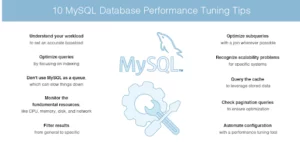
SQL indexes and queries might be subpar and should be optimized if you are responsible for enhancing and maintaining database performance.
4. Optimization of Indexes
The indexing of a relational database determines its usefulness. Both ends of the index’s range, however, are unacceptable. We have to settle on a middle ground.
A SELECT statement is unaffected by a database’s index. Having fewer indexes, on the other hand, may slow down your queries. As indexing looks at the amount of unique values in a single column, you should avoid both of them. Yet, the effectiveness of a database relies heavily on the careful consideration of field placement and selection. This discrepancy calls for improved indexing.
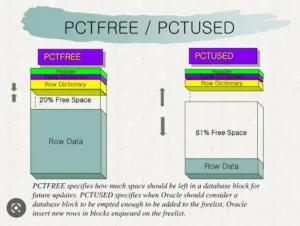
5. Estimate the growth rate
When a database is indexed, all of the information for the indexed columns is saved; however, any modifications to the underlying data, such as the addition of new rows, degrade the index’s effectiveness. Therefore, the database generates new rows by assigning a unique identifier to each data point.
Changes in the indexing brought about by the new data format have a negative effect on the speed with which DML queries are processed. The optimal approach to this problem is to foresee the rate at which the database will expand. The frequency of the index’s updates will allow you to tailor it to your specific needs. The Oracle database expansion forecasting metric known as PCTFREE is widely utilized.
6. Division of storage
There are still issues with hard drive performance in the present day. Sometimes they can’t keep up with the incredibly fast processing times. When a database grows too large for a single storage device, adjusting it becomes increasingly difficult.
The database management system enables data partitioning over multiple devices, lightening the strain on each individual device. The total amount of data determines how many tables can be partitioned. Spreading databases over multiple machines can boost their performance.
7. Foreign Key constraints
The term “Foreign Key restrictions” describes a typical approach to this. Nevertheless, this will decrease your database’s performance. When time is of the essence, the database’s performance optimization must be modified accordingly. You may speed up a database in two significant ways: by removing limits on foreign keys and by paying less attention to data integrity.
Data integrity checks can be performed in the application layer, reducing the load on the database while appeasing most security-conscious users. The finest example is the metadata users create and keep in the system tables about their databases.
8. Use a CDN
The server response time of your website can be sped up with the help of a content delivery network (CDN).
Static items like photos and stylesheets on your site can be loaded rapidly through a content delivery network (CDN). The CDN will retrieve the requested file from a location closer to the user than your server and then transfer it in response to the user’s request. Your load time will improve due to the decreased data sent between you and the user.
Faster file serving from the local cache improves the user experience for many visitors who view the same picture or CSS file several times.

9. Add Caching
Your server’s response time can be improved by using a cache to store data that is often accessed. Caching is most effective for static content like photos and HTML pages, but it can also assist in speeding up the delivery of dynamic content.
One of the numerous available caching plugins can help you improve your site’s responsiveness.
Such examples are as follows:
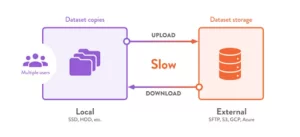
- WP Rocket
- W3 Total Cache
- Fast Velocity Minify
10. Upgrade to the latest version of PHP
The newest version of PHP (PHP 8+) is faster than its predecessor in several respects. It speeds up the source code transformation into machine language by employing state-of-the-art Zend OPcache compiler technology (OPcode).
Variables can be stored in RAM rather than on the hard disk, and this functionality is integrated right in.
This can greatly enhance the performance of WordPress and other applications by loading massive volumes of data from MySQL databases into server memory before processing or serving requests from a browser.
11. Optimize images and videos
The number of media files you have included in your WordPress site will affect how long it takes to load. Reducing the time it takes for images and videos to load in the user’s browser is an easy way to improve your site’s speed instantly.
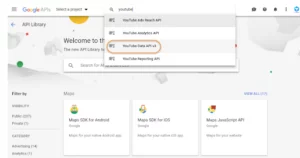
ImageOptim is a popular tool for enhancing the quality of digital photographs. It will compress all PNGs, JPGs, and GIFs in your WordPress media library. Video file quality can also be enhanced with the help of tools like Handbrake.
Use a dynamic image replacement plugin, such as Shortpixel, so your site’s visitors don’t have to wait for those enormous photos to load when they first visit (which will cause more delay).
12. Reduce page bloat
Content, plugins, and overly big or improperly coded themes might slow load speeds. All of these things add together to make your server slow to respond, and this will cause more work for your server to do.
The good news is that these issues have straightforward solutions. If you want to make your pages load faster, you need to eliminate the unnecessary junk that clutches them up.
The first order of business is to determine which WordPress plugins are necessary and then remove the others. We also recommend always using the most recent versions of these programs, as they often contain important security and performance fixes.
One more thing you can do to make your site load faster is to go with a minimalist, search engine optimization (SEO)-friendly theme. Keeping your site’s design simple will help it load more quickly.
13. Minify your CSS and JavaScript
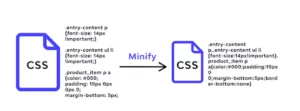
Minimizing the CSS and JavaScript files is a simple strategy to enhance performance. By using a minifying tool like WP Minify or Autoptimize, compressed files can be automatically generated while working with a WordPress theme.
When combined with HTML5 Boilerplate and Autoprefixer, the Google Closure Compiler creates a potent trio of tools for web developers. You can also develop a theme or plugin and manually compress CSS and JavaScript files using one of several methods:
- Experiment with a site-optimizing plugin, such as W3 Total Cache or Autoptimize.
- Use a plugin for WordPress or a service online like Minify
- Implement a library like Yahoo’s YUI Compressor
Factors To Consider For Website Usability Testing
Be sure that the approach to usability testing you settle on keeps an eye on things like accessibility, efficiency, mistakes, and customer pleasure. To track their progress, you can use integrations and performance monitoring tools.
- Accessibility: This score determines if the site is accessible to people with different impairments. To ensure that as many people as possible can use your website, it should conform to the highest level of accessibility recommended by the Web Content Accessibility Guidelines (Level AAA).
- Effectiveness: This criterion describes how quickly people go where they need to. A site’s effectiveness increases when its users can quickly complete their desired tasks.
- Errors: Typographical errors and more serious usability problems like broken links are uncovered during user testing. It keeps track of missteps, such as when a user navigates to one page when they are meant to go to another so that designers can adjust misleading labels or buttons.
- Satisfaction: With this indicator, you may gather data on how satisfied participants are and utilize that to improve your sites over time.
Conclusion
The user experience and a site’s position in search results are two areas profoundly affected by the server response time. Every millisecond counts when it comes to website performance, as the old adage goes. To ensure a website functions smoothly and efficiently, server response time must be optimized. Frustrated users, higher bounce rates, and poorer search engine results are all possible outcomes of a slow server response time. That’s why taking preventative measures is crucial to speed up server response.
Server configuration optimization, HTTP request reduction, and browser caching are all effective methods for speeding up server response times. Using a content delivery network (CDN) and picking a trustworthy hosting provider are two more efficient methods.
In addition to these technical safeguards, it is also critical to periodically evaluate server response time and swiftly address any difficulties. This calls for a preventative strategy toward website upkeep and a dedication to continuous testing and optimization.
By reducing the time it takes for a server to respond, website owners and developers may ensure that their site performs optimally, providing users with a satisfying experience and climbing the search engine ranks.



